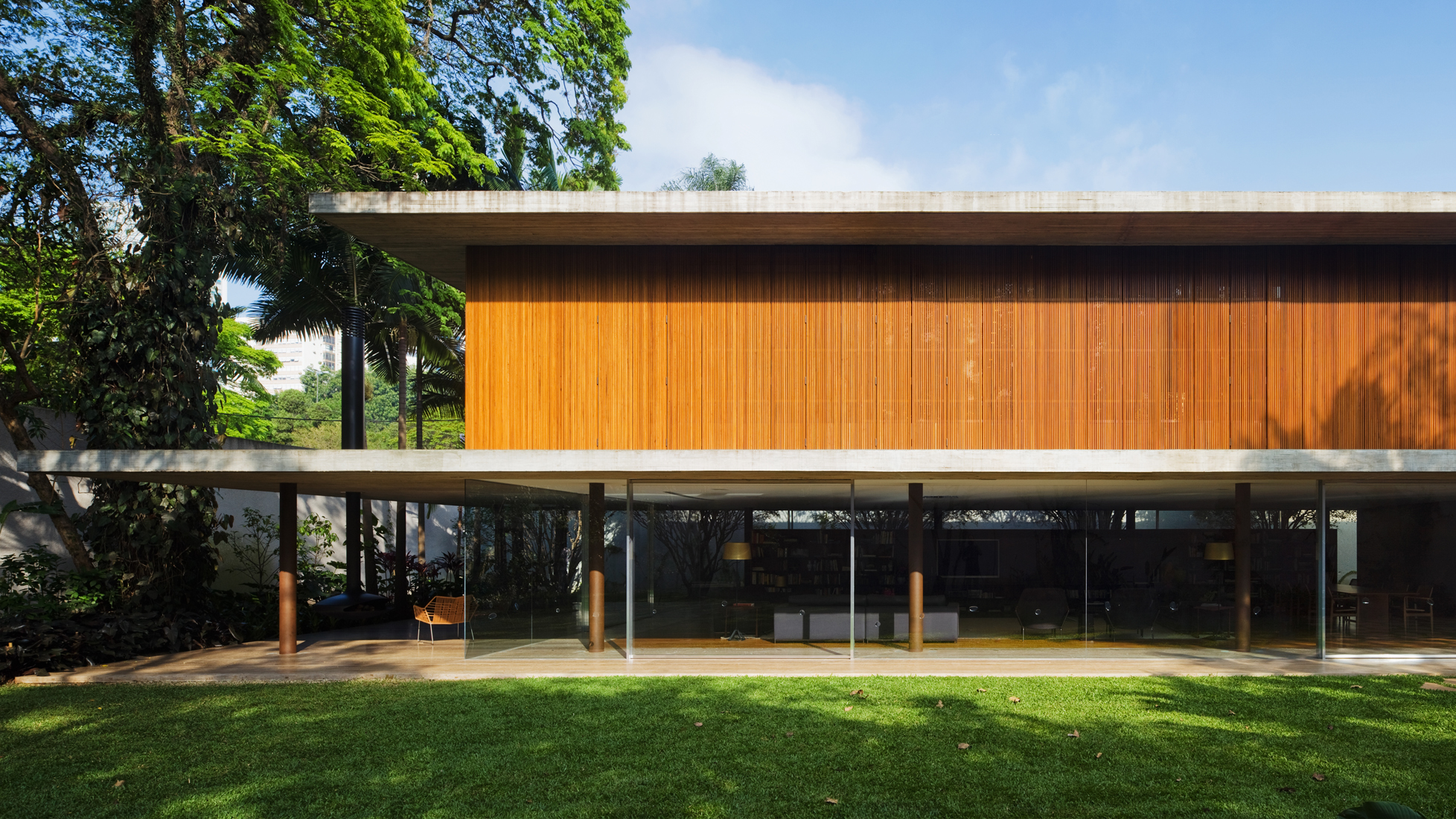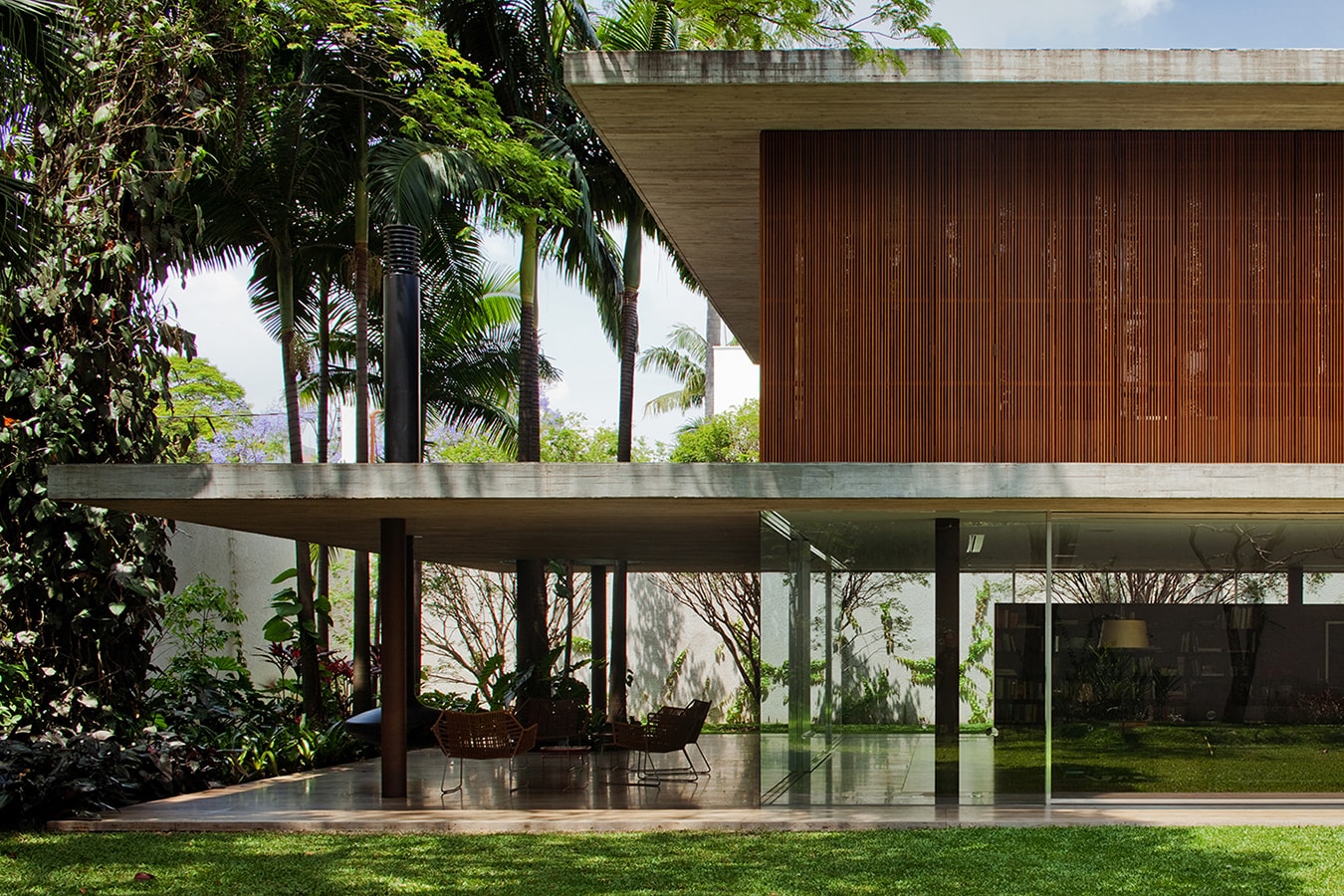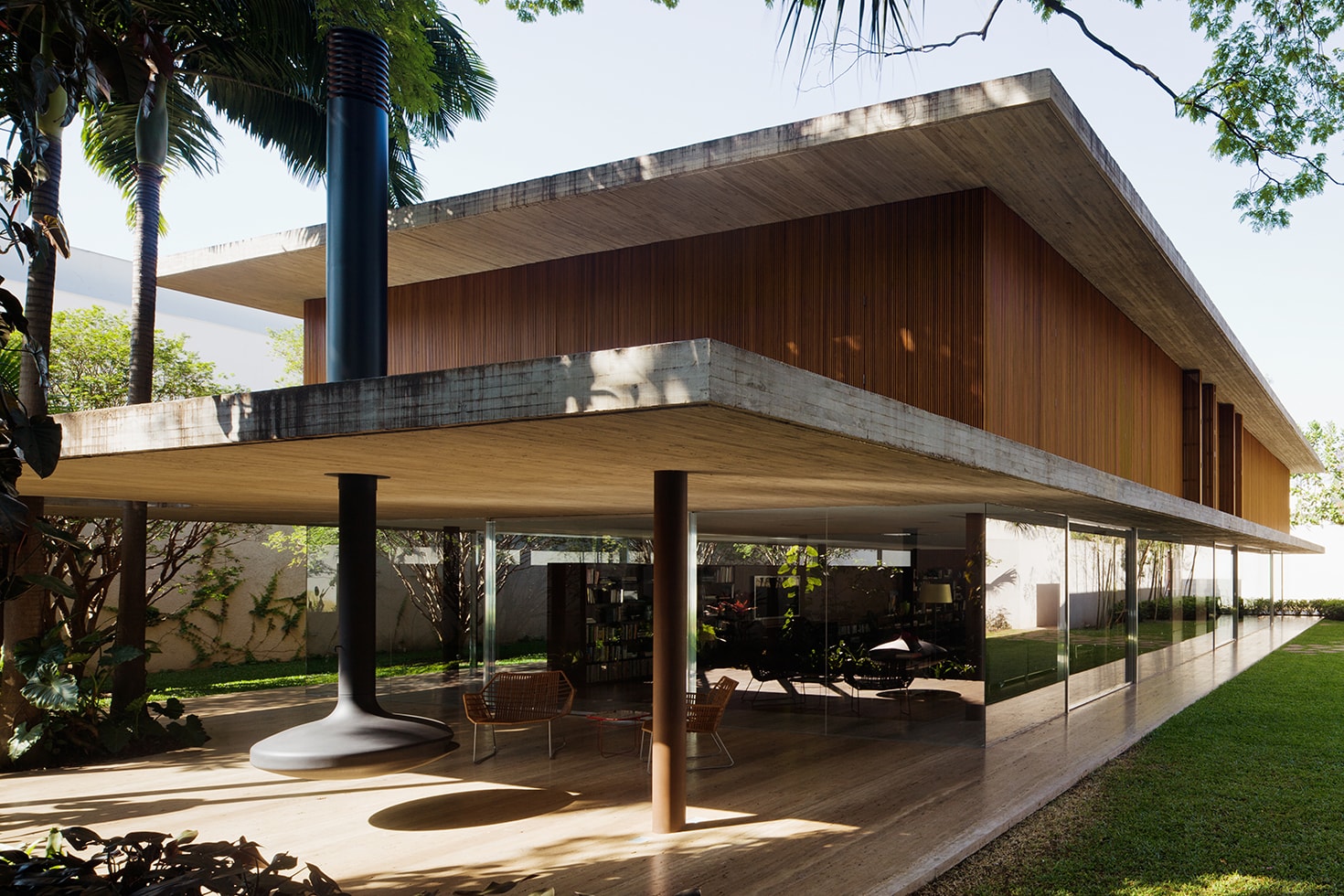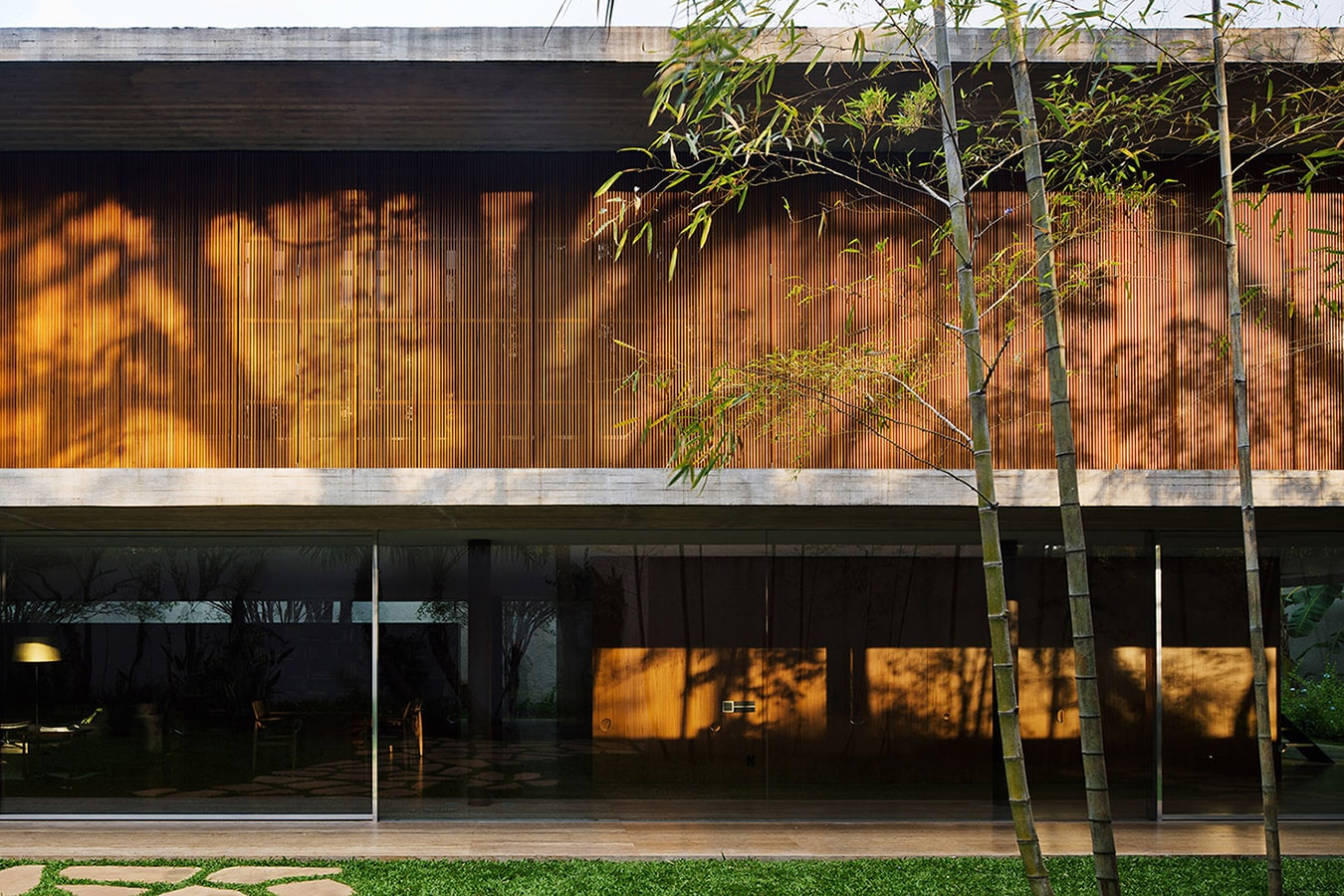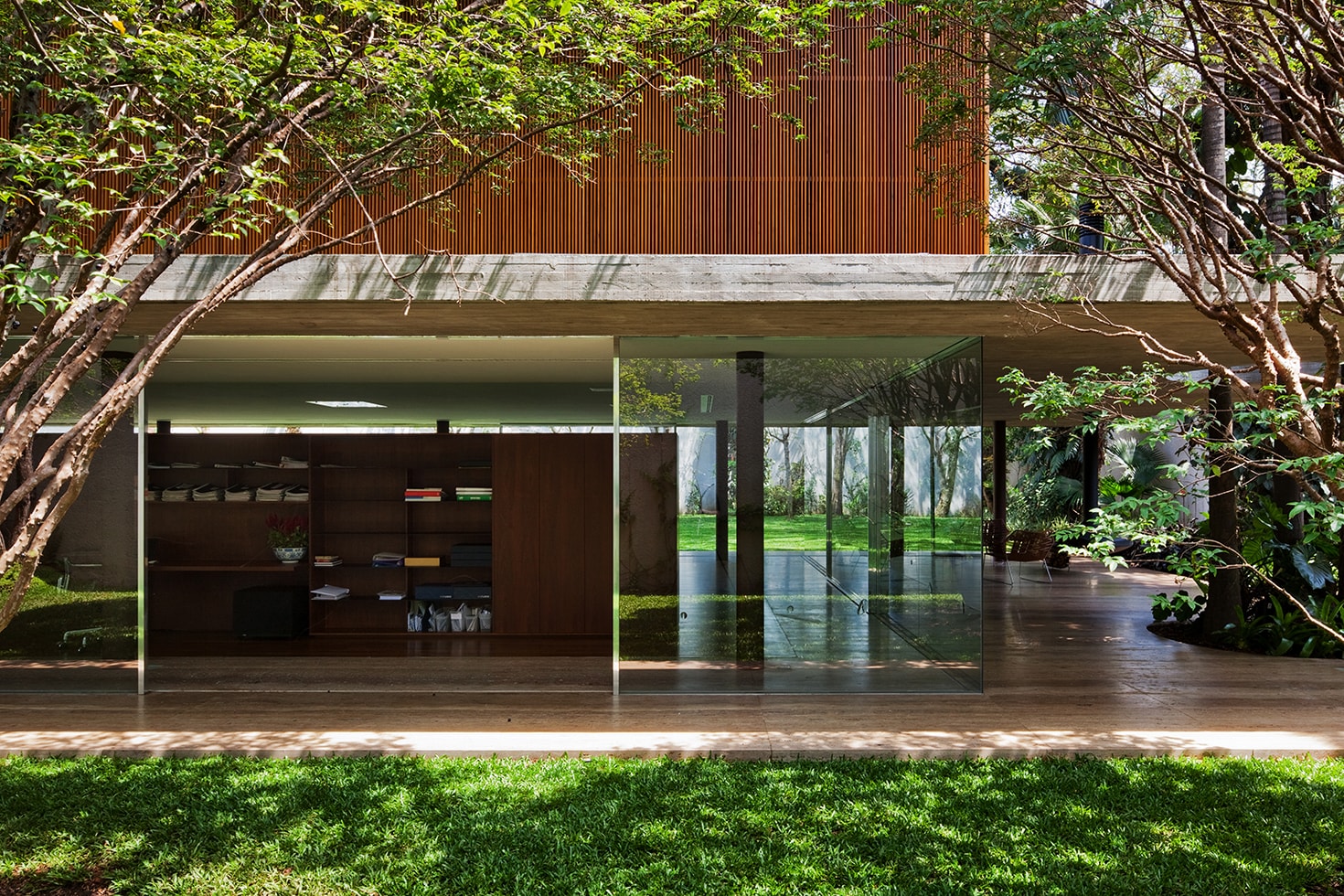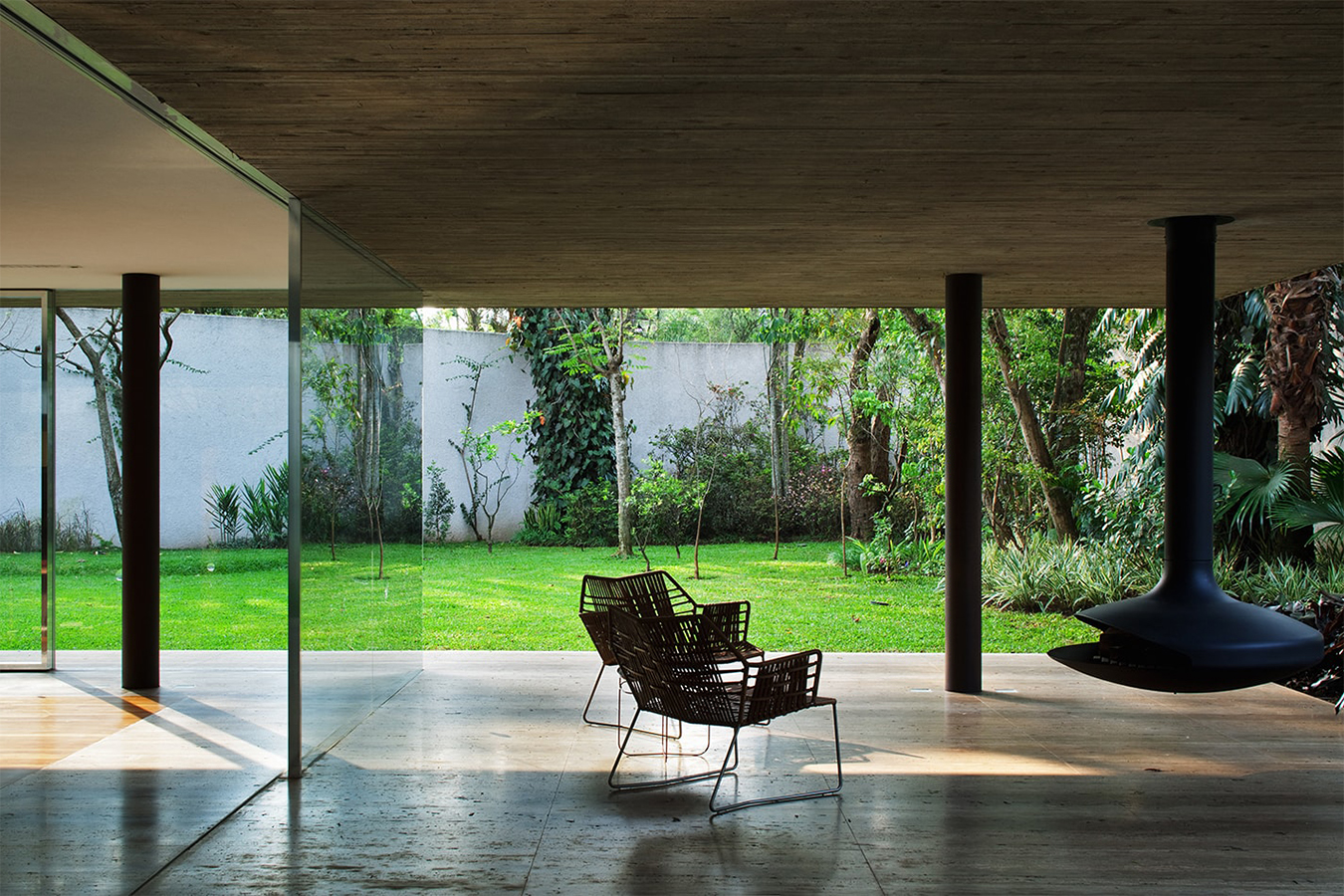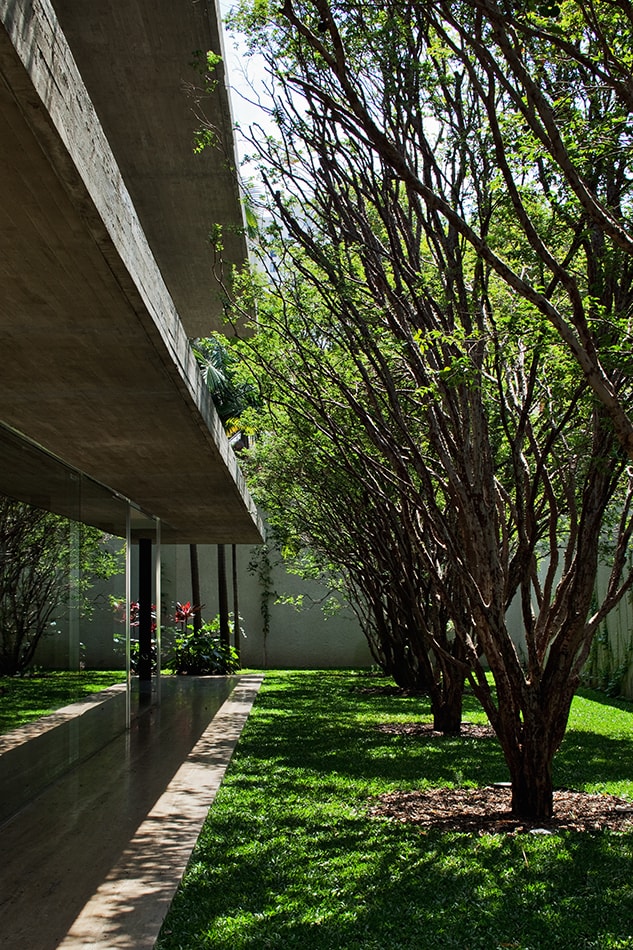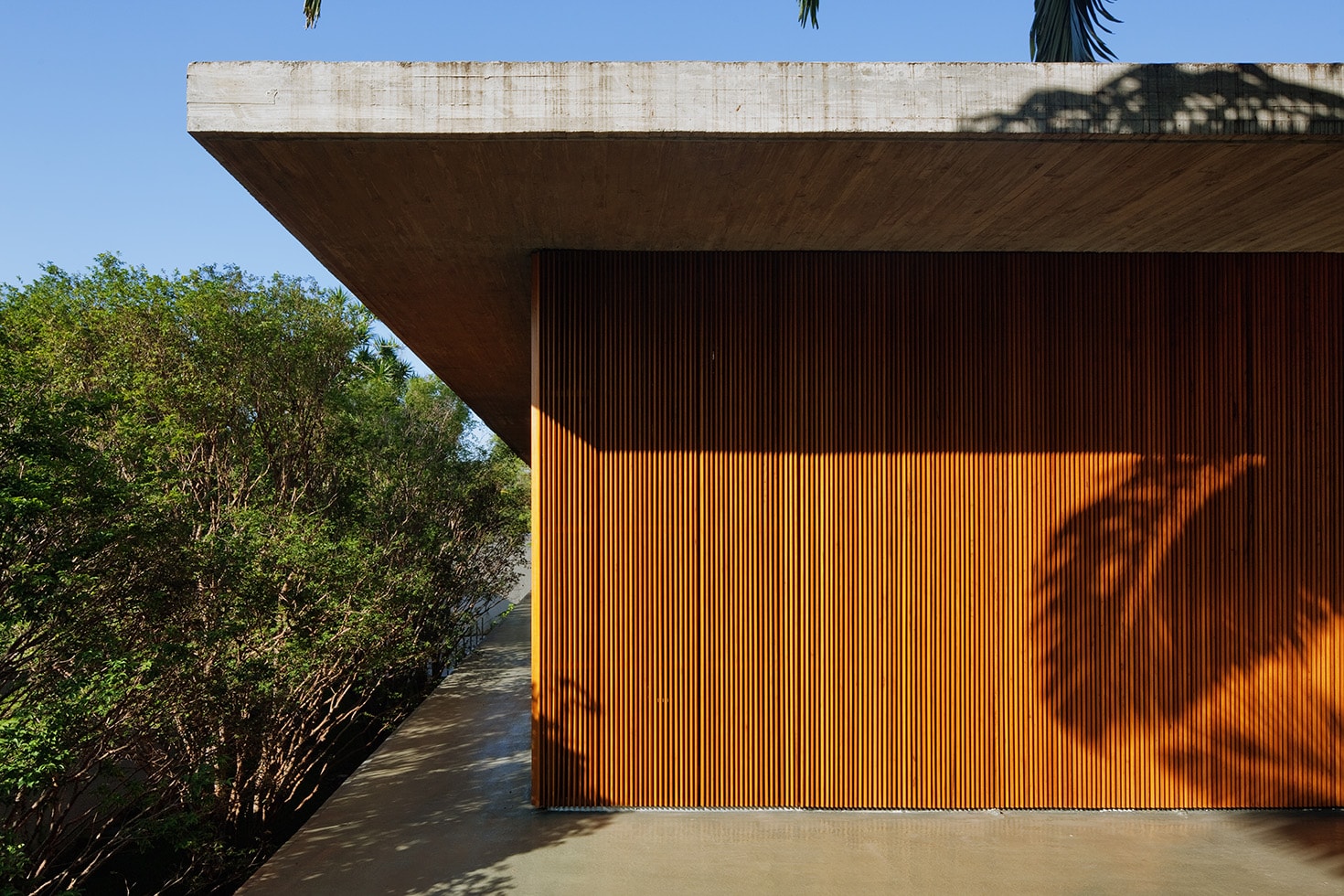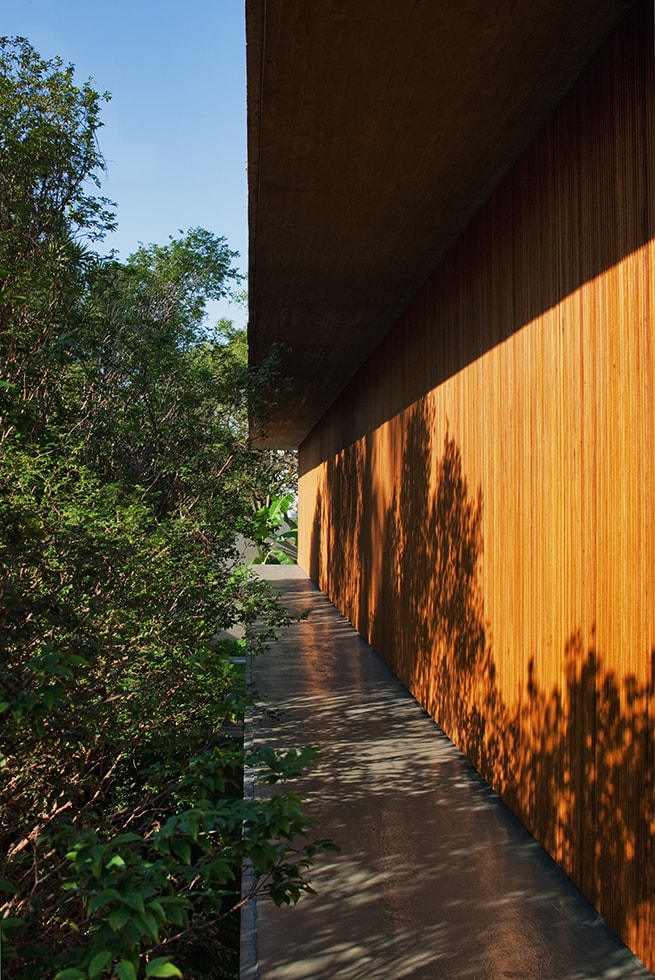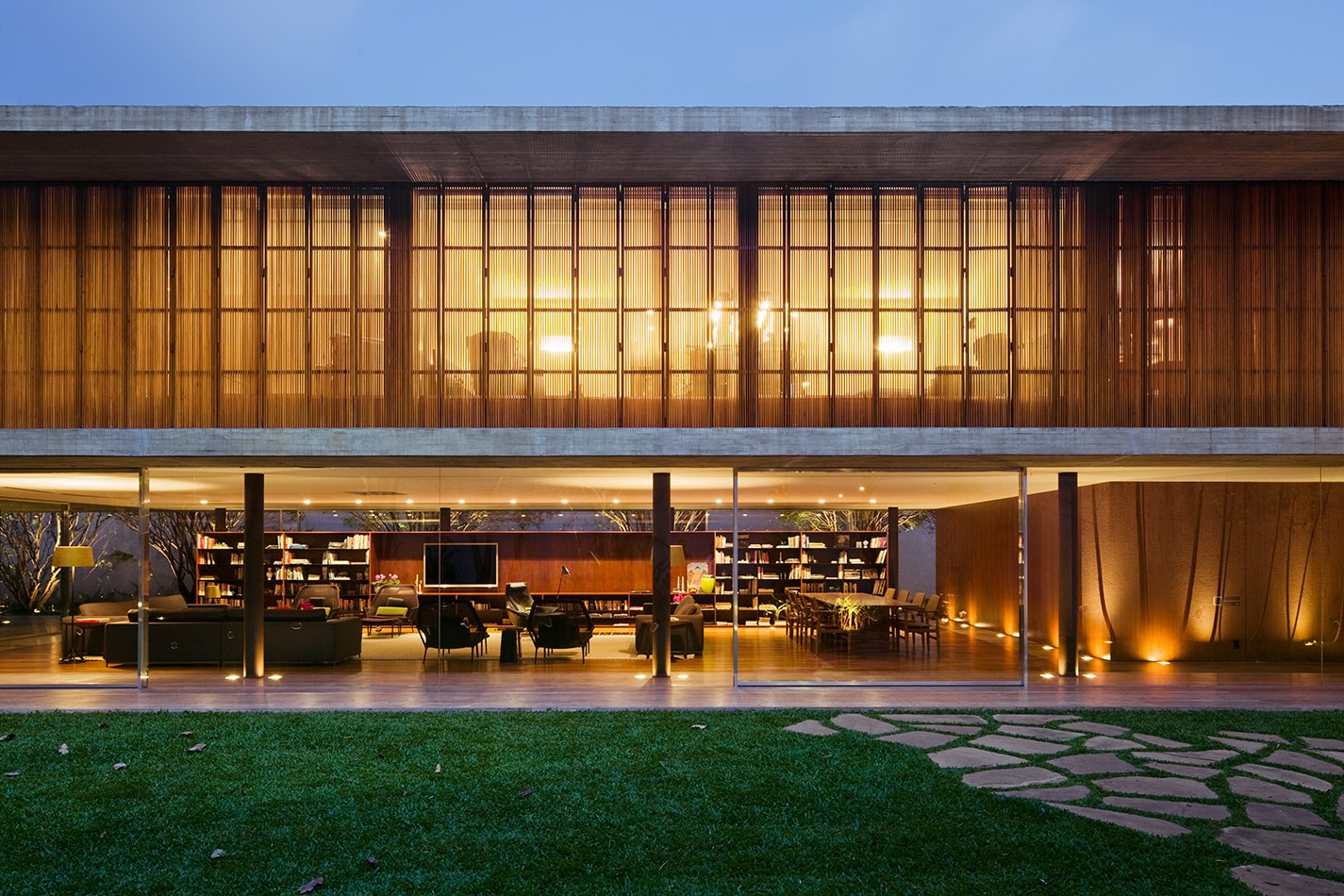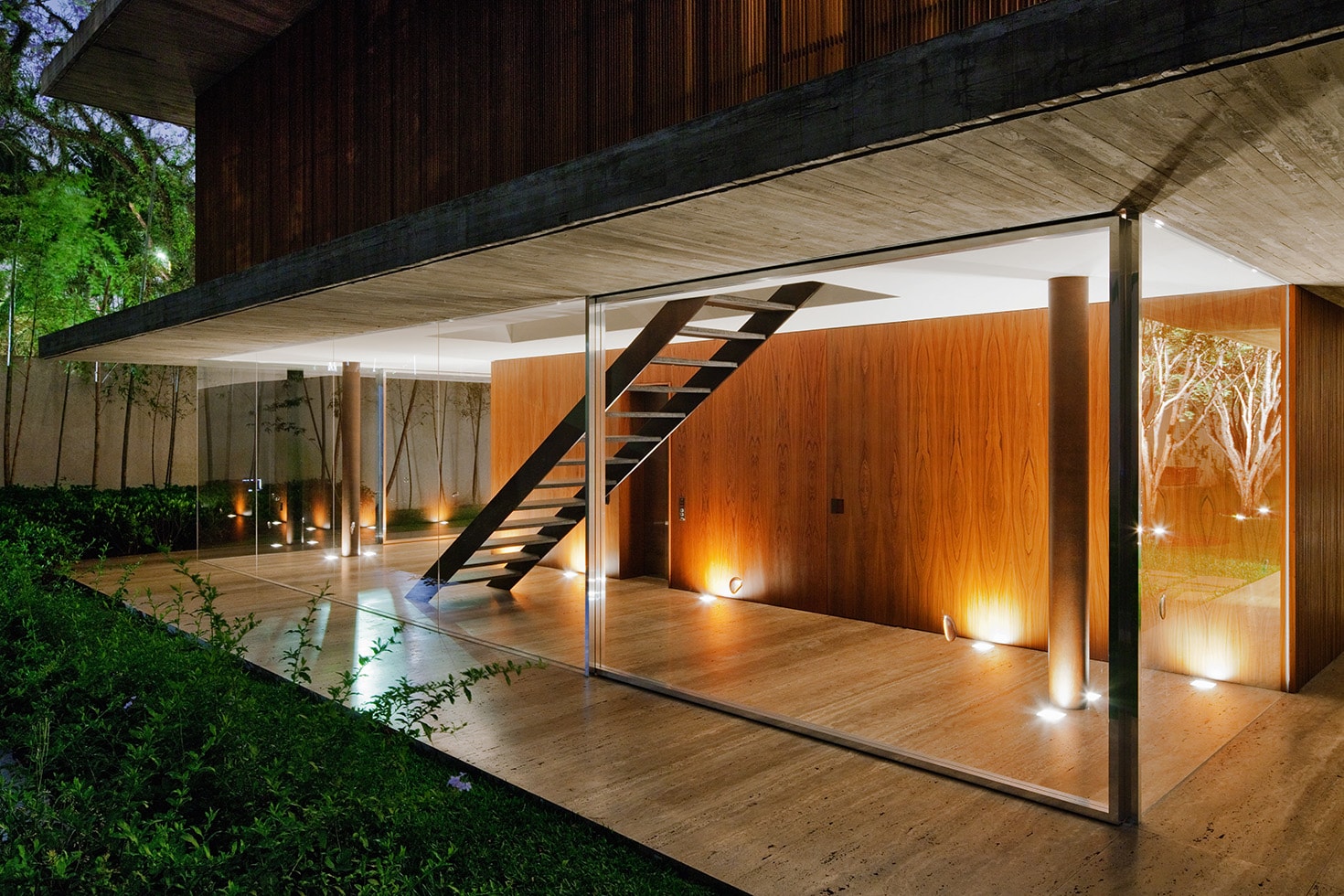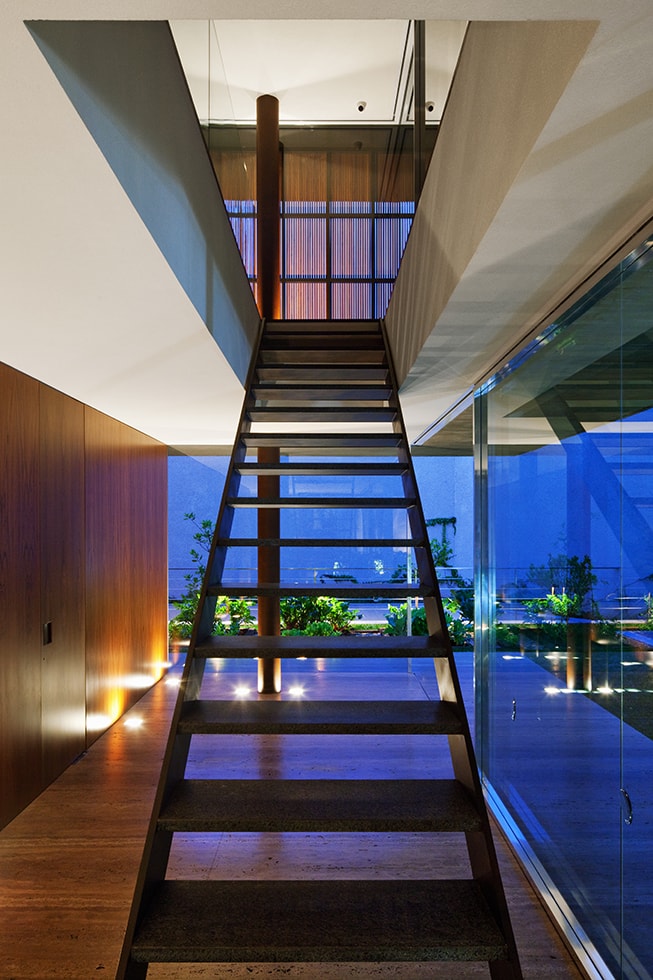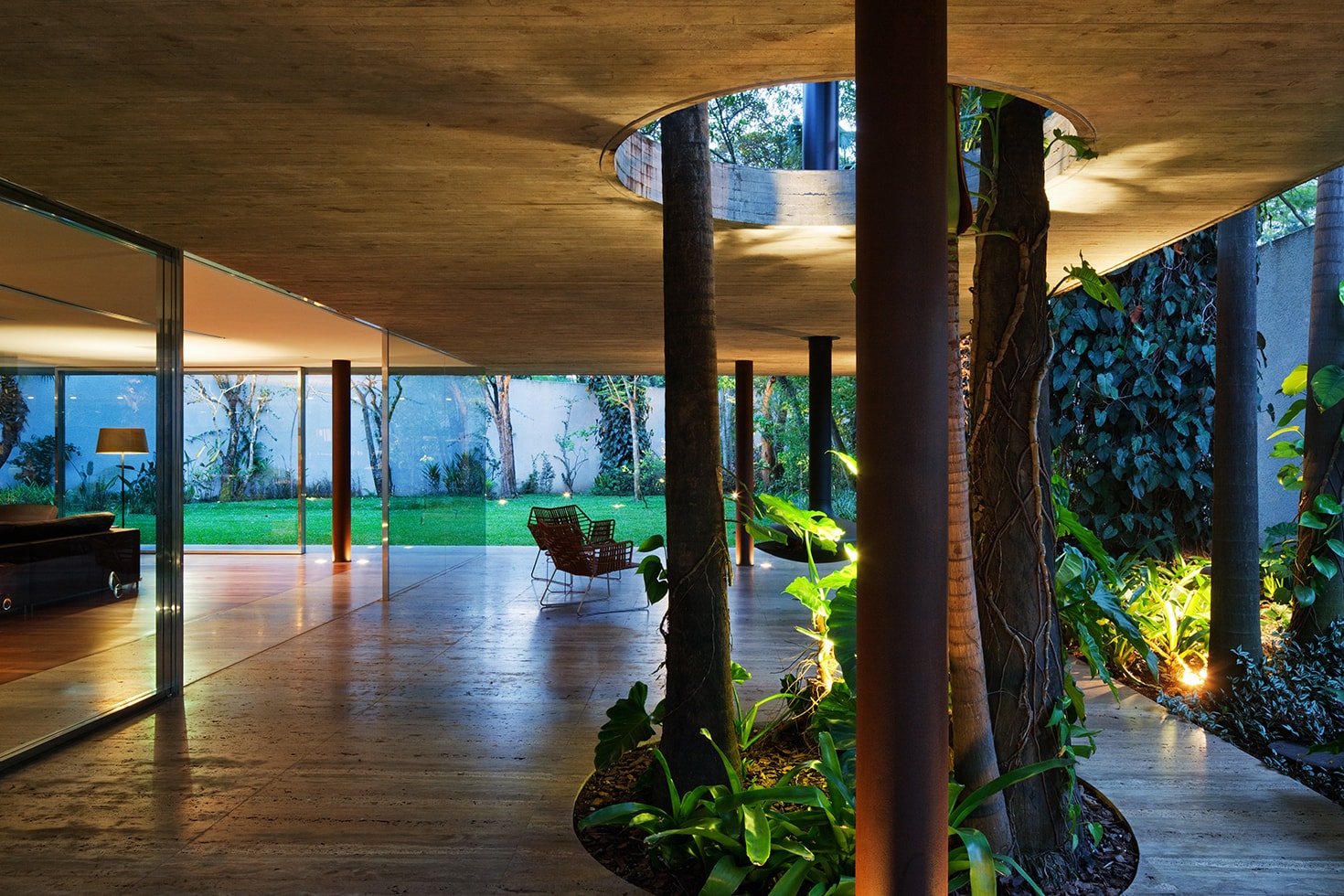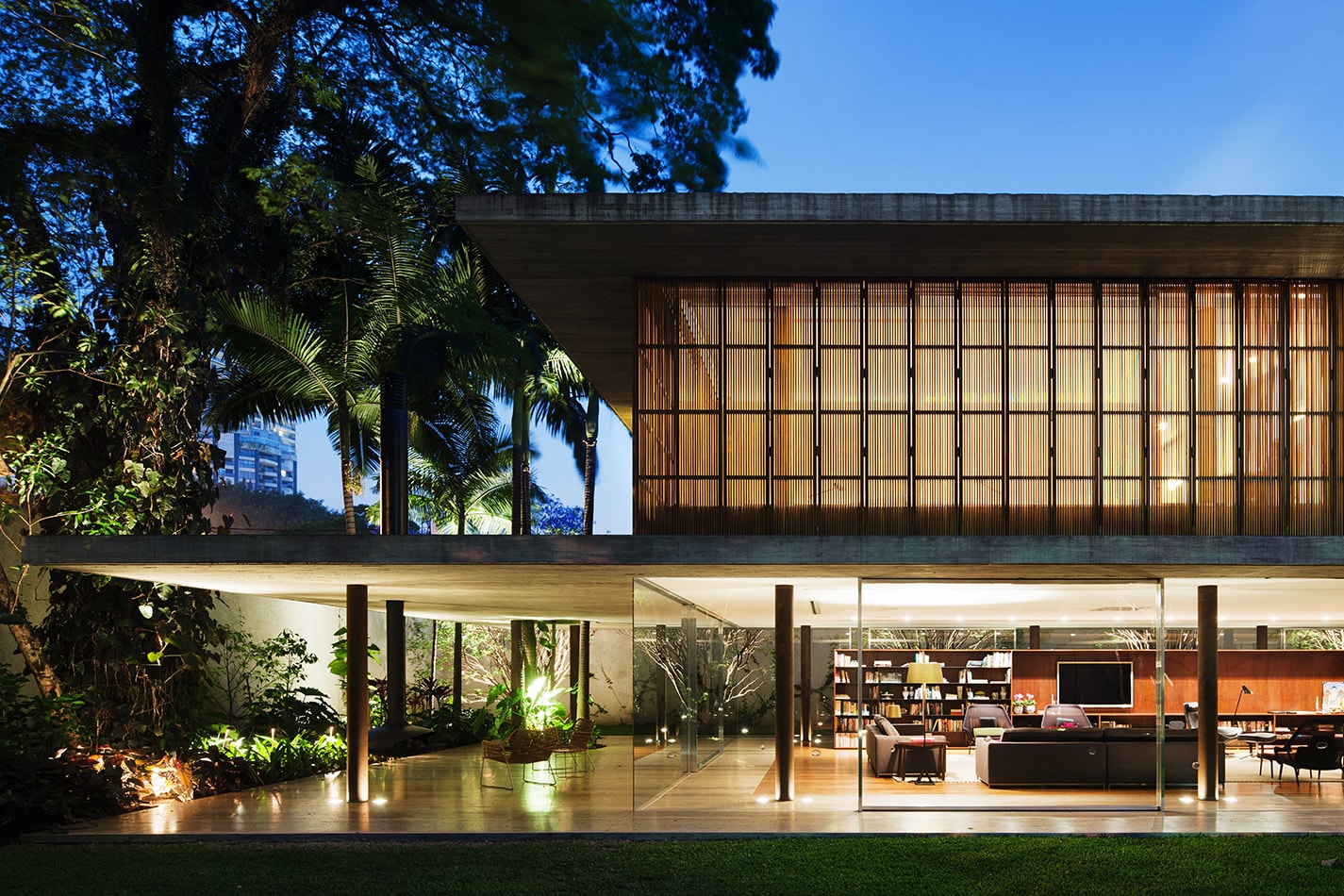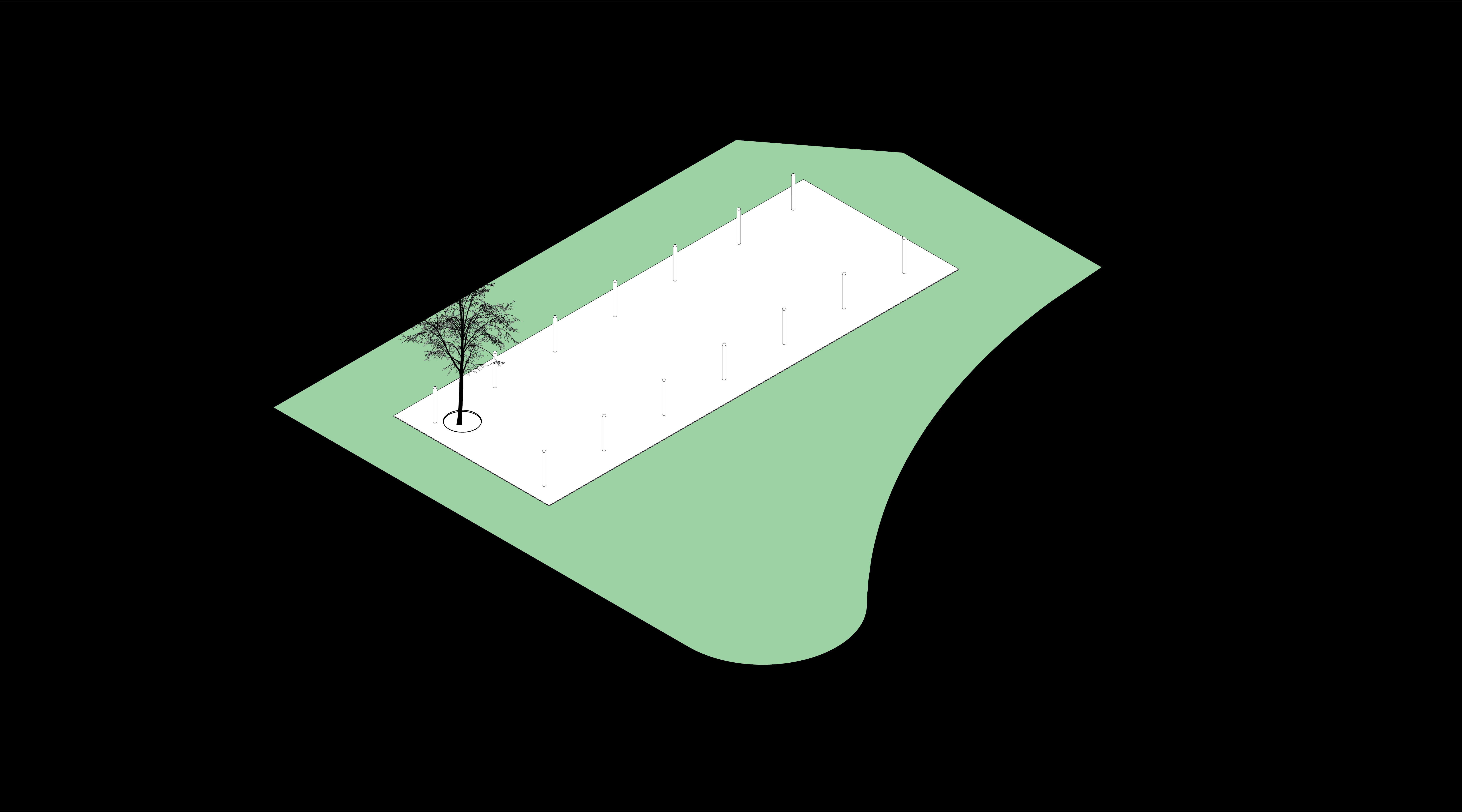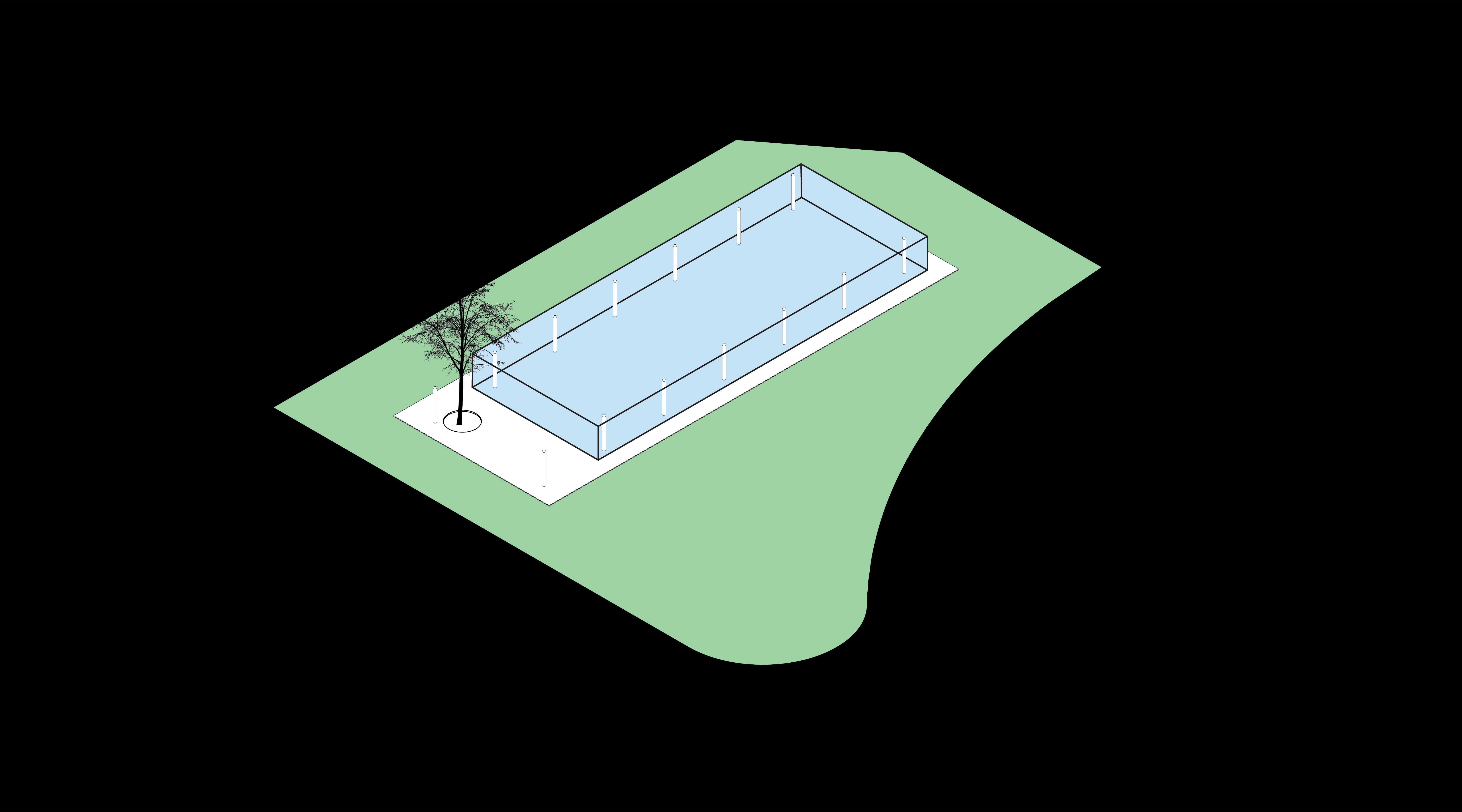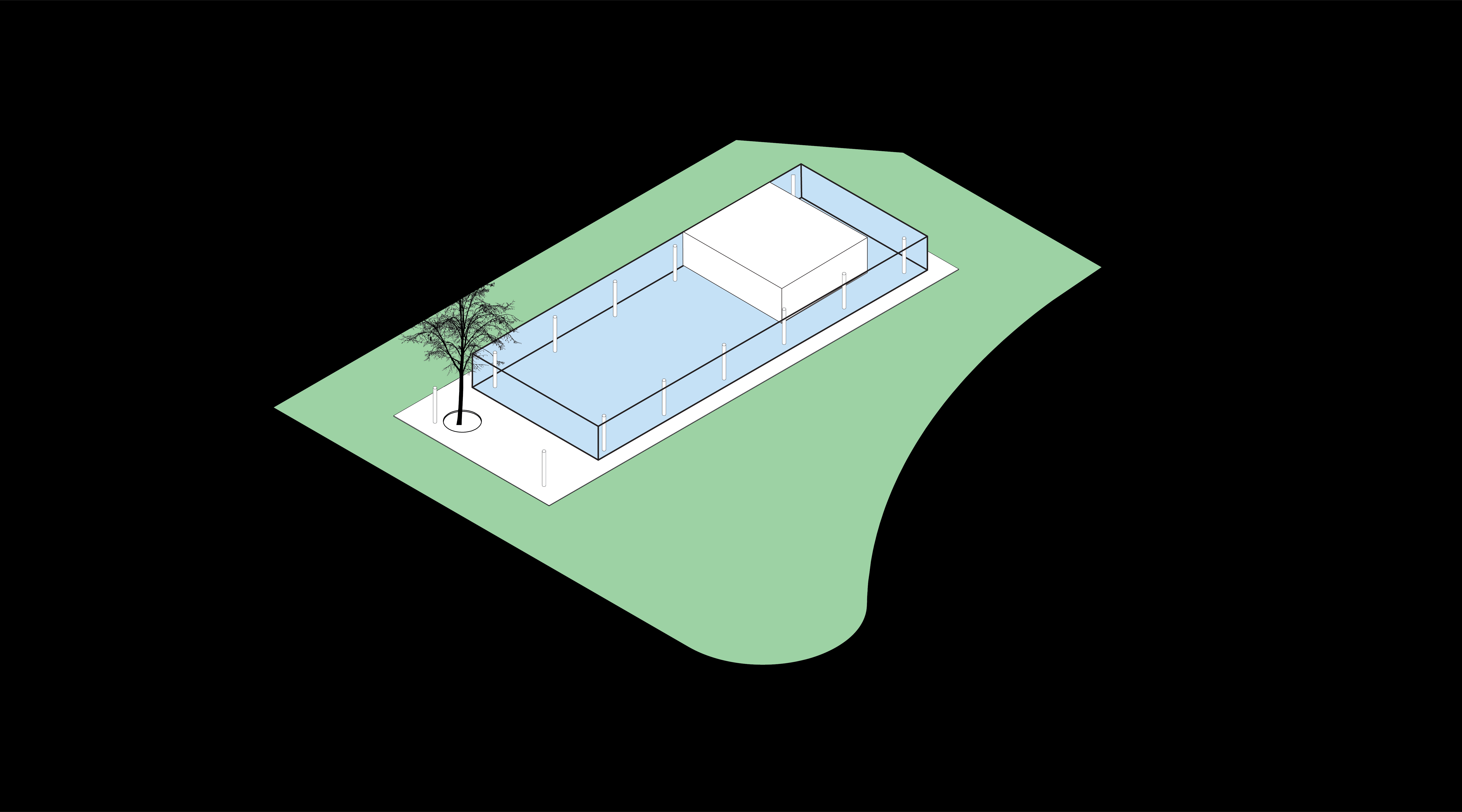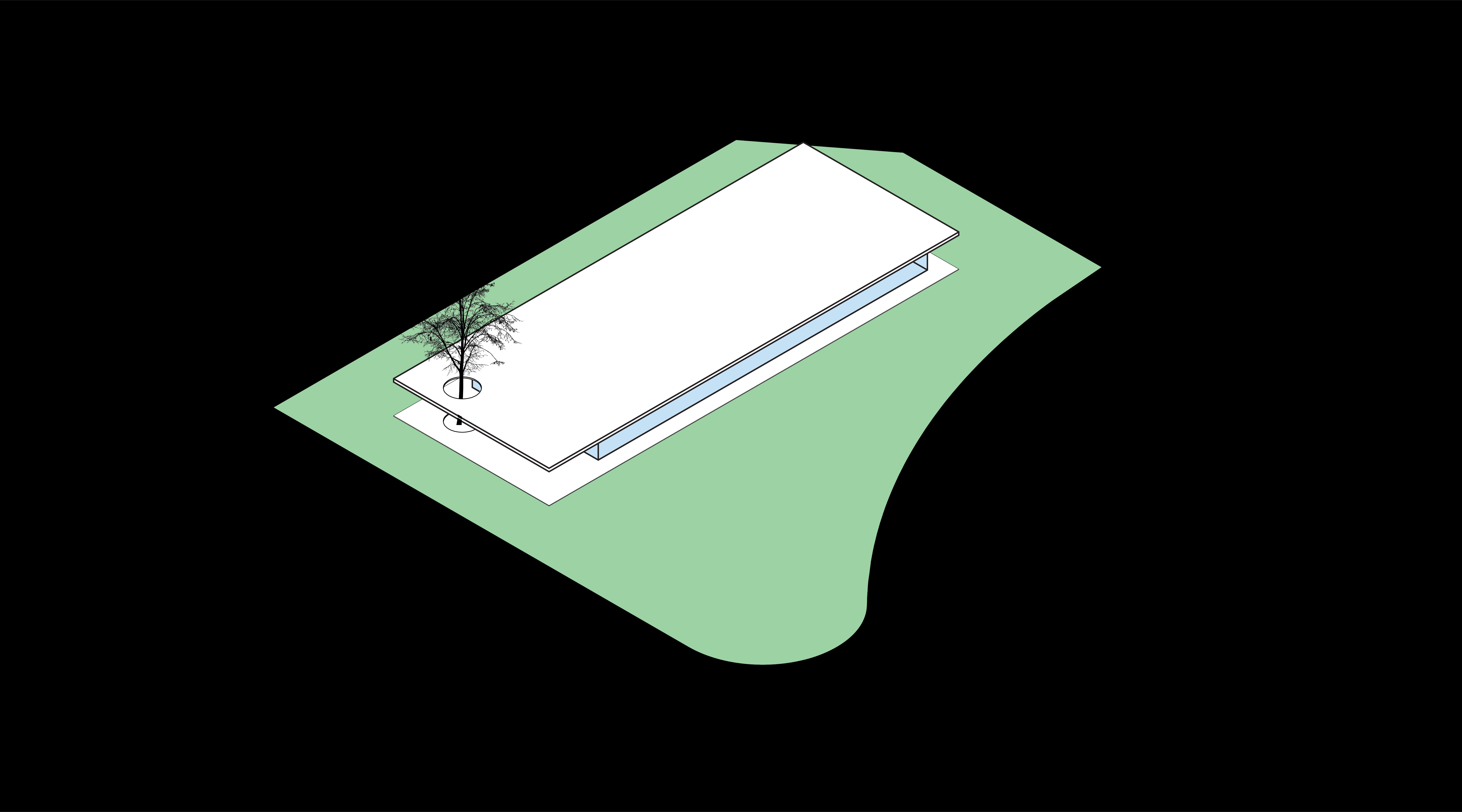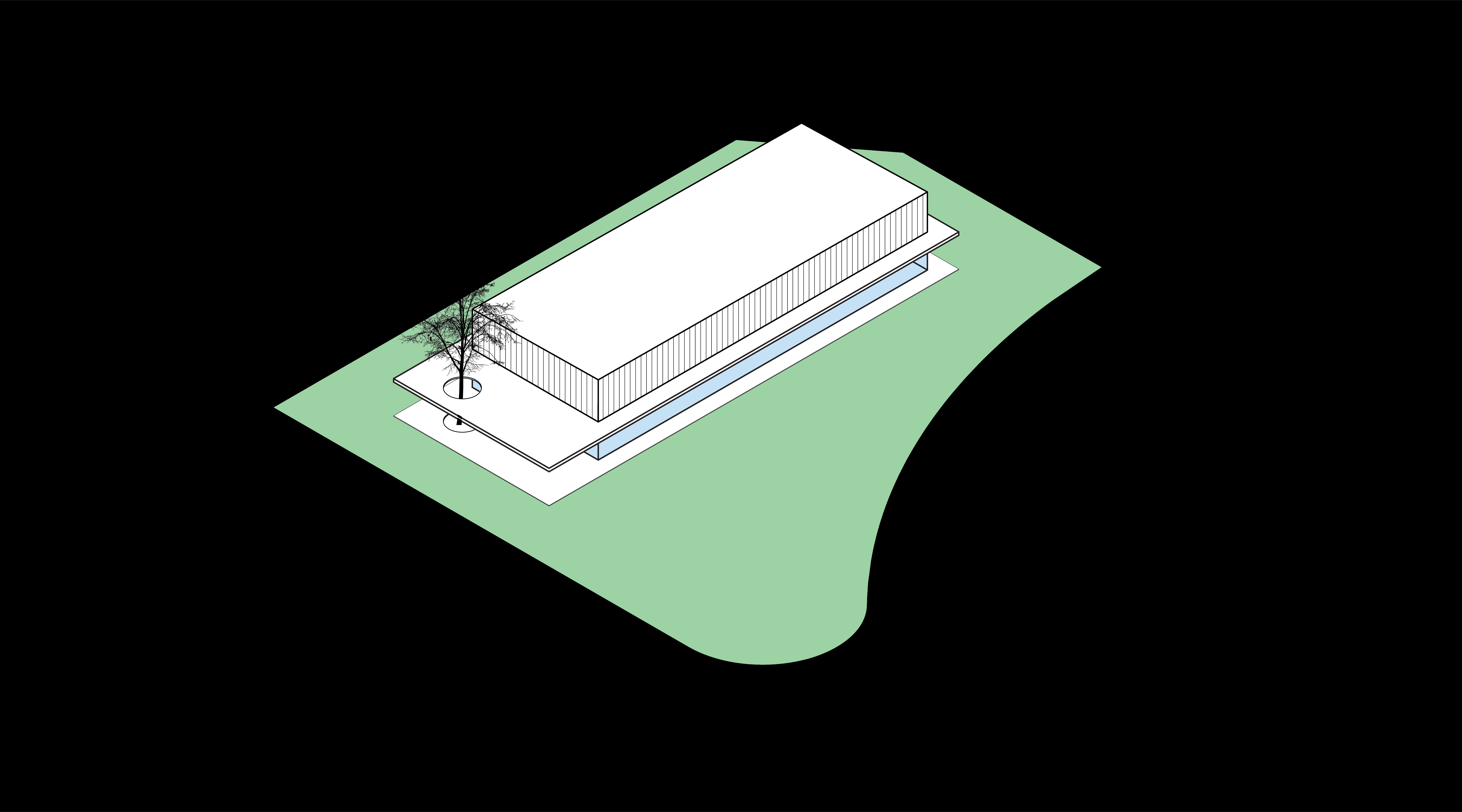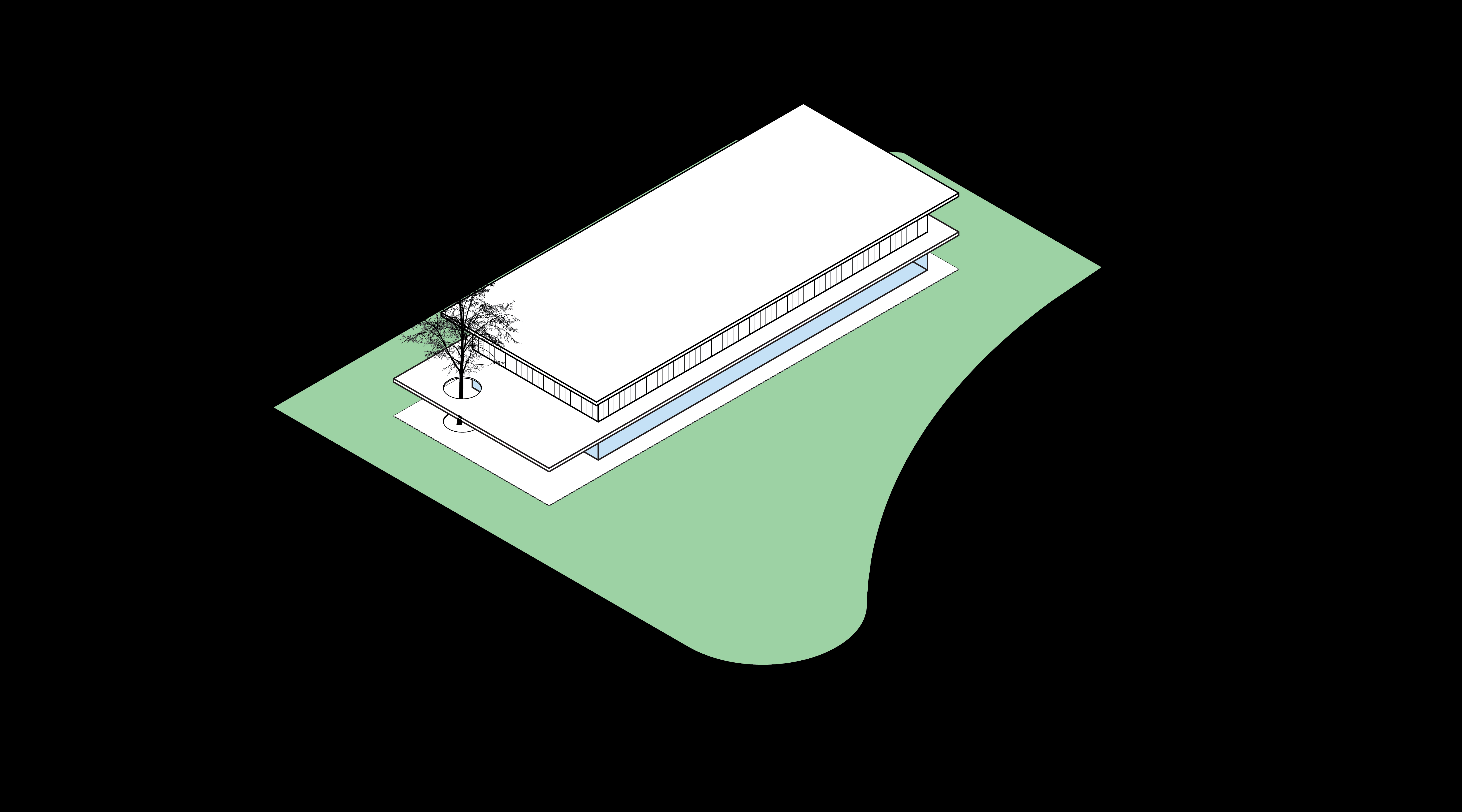In mid-2000’s, studio mk27 main investigations focus on spatial compositions of boxes with linear horizontal windows and on the façade design regarding the depth of the openings in exterior plans.
Exploring the townhouse typology (vertical urban house, usually, ground floor and three other stories), D House project disappears with this visible thickness of the external wall. Meticulous repetitions on prismatic boxes theme reach another dimension here: openings in the façades – such as windows and doors – give room to pure faces built using one single material (on the east and the west, the wood; on other façades, concrete).
Volume design becomes an architectural thinking based on surfaces defining a formal radical purity for the exterior. The brises take up the entire façade, from top to bottom, and can be opened completely, while window frames and openings are concealed under this wooden skin.
Passing through the front gate made of corten steel, you arrive at an architectural garden that serves as a reception hall: a patio with marble floor and a pitangueira. The spatial transition to the living room is completed by a veranda defined by a 2.5m cantilever on the upper volume. Two large floor-to-ceiling windows shape the house front door. These sliding frames can recede totally into the wall and dilute divisions between the inside and out.
Gabriel Kogan
local > são paulo . sp . brasil
projeto > janeiro . 2008
conclusão > outubro . 2011
area do terreno > 1.453 m2
area construída > 590 m2
-
arquitetura e interiores> studio mk27
arquitetura > studio mk27
autor > marcio kogan
co-autora > diana radomysler
interiores > diana radomysler
equipe de arquitetura > fernanda palmieri . fernando falcon . oswaldo pessano
equipe de interiores > carolina castroviejo
equipe de comunicação > mariana simas
-
construtora > lock
engenharia estrutural > gilberto pinto rodrigues
paisagismo > isabel duprat
-
fotografo > fernando guerra
In mid-2000’s, studio mk27 main investigations focus on spatial compositions of boxes with linear horizontal windows and on the façade design regarding the depth of the openings in exterior plans.
Exploring the townhouse typology (vertical urban house, usually, ground floor and three other stories), D House project disappears with this visible thickness of the external wall. Meticulous repetitions on prismatic boxes theme reach another dimension here: openings in the façades – such as windows and doors – give room to pure faces built using one single material (on the east and the west, the wood; on other façades, concrete).
Volume design becomes an architectural thinking based on surfaces defining a formal radical purity for the exterior. The brises take up the entire façade, from top to bottom, and can be opened completely, while window frames and openings are concealed under this wooden skin.
Passing through the front gate made of corten steel, you arrive at an architectural garden that serves as a reception hall: a patio with marble floor and a pitangueira. The spatial transition to the living room is completed by a veranda defined by a 2.5m cantilever on the upper volume. Two large floor-to-ceiling windows shape the house front door. These sliding frames can recede totally into the wall and dilute divisions between the inside and out.
Gabriel Kogan





